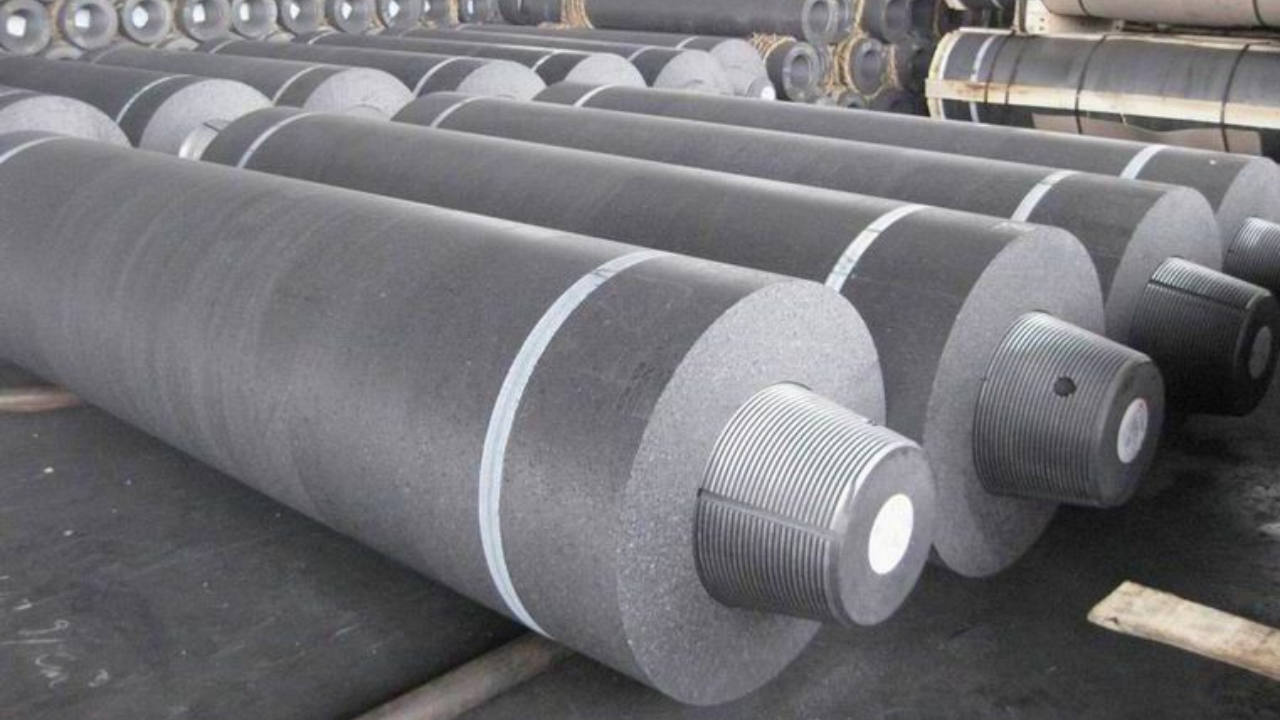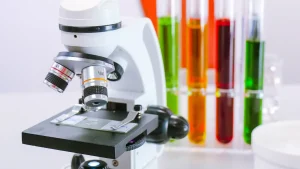
Graphite electrodes have transformed lithium-ion battery production by delivering exceptional cost-efficiency. This affordability is largely due to the use of materials like graphite blocks and graphite rod&tube, which simplify the manufacturing process. Additionally, components such as graphite bolts&nuts and graphite rings play a crucial role in improving scalability, making mass production more feasible. These advantages firmly establish graphite electrodes as a superior choice compared to traditional alternatives.
Key Takeaways
- Graphite electrodes cost less than traditional ones because materials are cheaper and production is quicker.
- Using graphite electrodes helps the environment by recycling and saving energy during production.
- Graphite electrodes meet the rising need for electric cars and better energy storage.
Understanding Graphite and Traditional Electrodes
Graphite Electrode: Key Features and Benefits
Graphite electrodes offer several advantages that make them indispensable in lithium-ion battery production. Their exceptional electrical conductivity and thermal stability ensure efficient energy transfer and heat management during operation. Additionally, graphite electrodes resist oxidation, which enhances their durability in high-temperature environments.
In industrial applications, graphite electrodes demonstrate superior performance. For instance:
- They achieve higher metal removal rates due to faster spark initiation and lower temperature requirements for electron emission.
- Wear rates remain below 1%, significantly outperforming traditional materials like copper.
- Fine-grain graphite delivers surface finishes comparable to copper, even in intricate designs.
These features make graphite electrodes a preferred choice for electric discharge machining (EDM) and battery production. Their ability to handle complex geometries and high current densities reduces the number of electrodes required, further improving cost-efficiency.
Traditional Electrodes: Characteristics and Limitations
Traditional electrodes, such as copper, face several challenges in modern battery production. Studies reveal inefficiencies in their coating processes. For example, cylindrical battery cells with traditional electrodes require intermittent coating due to tab welding. This limitation reduces coating speed and increases production costs.
Moreover, traditional electrodes experience higher wear rates and struggle to maintain performance under high current densities. These drawbacks make them less suitable for applications requiring precision and durability, such as electric vehicles and advanced energy storage systems.
Importance of Electrodes in Lithium-Ion Batteries
Electrodes play a critical role in determining the performance and cost of lithium-ion batteries. The table below highlights their impact:
| Electrode Type | Key Materials | Impact on Performance |
|---|---|---|
| Cathodes | LFP, NMC/NCA | Defines performance and price; high energy density crucial for EVs |
| Anodes | Graphite, Silicon | Majority market share; new materials like silicon enhance energy density |
Graphite electrodes dominate the anode market due to their affordability and scalability. Their adoption supports the growing demand for electric vehicles and sustainable energy solutions.
Cost Comparison of Graphite and Traditional Electrodes
Material Costs: Natural vs. Synthetic Graphite
The cost of graphite electrodes largely depends on the type of graphite used—natural or synthetic. Synthetic graphite, known for its high purity and superior performance, is often preferred for advanced applications like lithium-ion batteries. However, it comes at a premium, with prices reaching approximately USD 18,000 per kilogram. In contrast, natural graphite offers a more cost-effective alternative, priced between USD 6,000 and USD 10,000 per kilometric ton. Recent advancements in purification techniques have further enhanced the competitiveness of natural graphite, enabling it to replace synthetic options in certain applications. This cost disparity makes natural graphite a viable choice for manufacturers aiming to optimize production expenses without compromising quality.
Manufacturing Costs and Process Efficiency
Graphite electrodes outperform traditional electrodes in terms of manufacturing efficiency. Advancements in electrode technology have extended their lifespan and reduced consumption rates, leading to lower operational costs. Companies are also leveraging innovations in needle coke production to improve the quality and availability of graphite electrodes. Additionally, the integration of sensors and data analytics in electric arc furnaces (EAF) has enhanced production efficiency. These developments not only reduce energy consumption but also streamline manufacturing processes, making graphite electrodes a more economical option for large-scale production.
Scalability and Mass Production Advantages
Graphite electrodes offer significant advantages in scalability and mass production, particularly in the growing electric vehicle (EV) and lithium-ion battery markets. Their precision and efficiency enhance battery performance, making them ideal for high-volume manufacturing. The adoption of energy-efficient EAF technology further supports their scalability, enabling manufacturers to meet increasing demand. As the EV market expands, the role of graphite electrodes in facilitating sustainable and cost-effective production becomes even more critical.
Production Efficiency of Graphite Electrodes
Faster Production and Reduced Energy Use
Graphite electrodes significantly enhance production efficiency in industrial applications. Their high thermal conductivity and superior electrical properties enable faster energy transfer, reducing the time required for processes like steel melting. For example, ultra-high power (UHP) graphite electrodes dominate the market due to their ability to handle intense electrical currents, making them ideal for electric arc furnaces (EAFs).
Key Attributes of Graphite Electrodes in EAFs:
- High thermal conductivity ensures efficient heat transfer.
- Superior electrical conductivity minimizes energy consumption.
- Enhanced production rates lead to cost-effective operations.
| Attribute | Description |
|---|---|
| Market Share | UHP graphite electrode segment held the largest market share in 2023. |
| Application | Primarily utilized in Electric Arc Furnaces (EAFs) for melting steel scrap. |
| Thermal Conductivity | High thermal conductivity makes them ideal for efficient steel production. |
| Energy Consumption | Superior electrical conductivity significantly reduces energy consumption. |
These attributes make graphite electrodes indispensable for industries aiming to optimize production efficiency and reduce operational costs.
Waste Reduction and Sustainability
The production and recycling of graphite electrodes contribute to environmental sustainability. The global graphite electrode waste market, valued at USD 1.2 billion in 2023, is projected to grow at a compound annual growth rate (CAGR) of 9.2% through 2032. This growth reflects the increasing demand for recycled graphite materials in steel and battery manufacturing. Recycling reduces raw material costs and addresses environmental concerns, making it a sustainable solution for industries.
Additionally, the rise in electric vehicle production has amplified the need for high-quality graphite. Recycled graphite materials offer a cost-effective alternative, supporting the transition to greener manufacturing practices. Emerging markets, particularly in steel production, are driving demand for effective waste management solutions, further emphasizing the importance of sustainability in graphite electrode production.
Long-Term Durability and Performance
Graphite electrodes excel in durability and performance, making them a preferred choice for high-intensity applications. They endure higher electrical currents and thermal loads compared to traditional electrodes, which is crucial for industries like aerospace and automotive. Ultra-high power (UHP) graphite electrodes, in particular, offer enhanced thermal resistance and electrical load capacity, ensuring longevity in demanding environments.
Ongoing technological advancements have further improved the efficiency and lifespan of graphite electrodes. Companies are investing in research and development to produce electrodes capable of withstanding higher temperatures and offering extended durability. These innovations solidify the role of graphite electrodes as a reliable and cost-effective solution for modern manufacturing needs.
Industry Implications of Graphite Electrode Adoption
Environmental Impact and Sustainability
The adoption of graphite electrodes has significant environmental benefits. Recycling graphite electrodes reduces raw material costs and addresses sustainability concerns. Companies are increasingly investing in recycling technologies to minimize their carbon footprints. Regulatory pressures also encourage eco-friendly practices, including waste management solutions.
| Aspect | Description |
|---|---|
| Recycling Benefits | Reduces raw material costs and addresses environmental sustainability concerns. |
| Demand for Waste Management | Anticipated rise in demand for effective graphite electrode waste management in growing steel markets. |
| Regulatory Influence | Environmental regulations are driving companies to adopt eco-friendly practices, including recycling. |
| Carbon Footprint Reduction | Companies are encouraged to invest in recycling technologies to reduce carbon footprints. |
The growing demand for sustainable solutions in steel and battery production highlights the importance of graphite electrodes in reducing environmental impact.
Innovations in Electrode Technology
Technological advancements are transforming the graphite electrode industry. Research and development efforts focus on improving electrode durability and efficiency. For instance:
- Micro-porous and ultra-high-density materials now allow electrodes to handle higher electrical currents.
- Carbon nanotubes (CNTs) enhance electrode thickness and performance, enabling applications in supercapacitors and fuel cells.
- Silicon anodes, developed using CNTs, offer better performance for lithium-ion batteries.
| Innovation | Description |
|---|---|
| Improved performance at higher C-rate | Enhancements in electrode efficiency for lithium-ion batteries. |
| Thicker electrodes enabled by CNT mechanical performance | Utilization of carbon nanotubes to improve electrode thickness and performance. |
| New innovations for CNT enabled silicon anodes | Development of silicon anodes using carbon nanotubes for better performance. |
These innovations ensure that graphite electrodes remain at the forefront of modern manufacturing technologies.
Market Trends and Future Demand
The market for graphite electrodes is poised for substantial growth. The lithium-ion battery market, driven by the electric vehicle sector, is projected to exceed $400 billion by 2035. Rapid advancements in battery technology and increasing EV sales in 2023 indicate a strong future demand for graphite electrodes. Manufacturers are also leveraging innovations to enhance battery performance and reduce costs, further supporting market expansion.
The steel industry continues to rely on graphite electrodes due to their cost-efficiency and environmental benefits. As companies invest in R&D to improve electrode quality and availability, the market dynamics will likely favor sustainable and advanced solutions. This trend underscores the strategic importance of graphite electrodes in meeting future industrial demands.
Graphite electrodes deliver unmatched cost-efficiency and sustainability in lithium-ion battery production. Their adoption supports the growing demand for electric arc furnaces, which reduce operational costs and environmental impact. With advancements in technology and regulatory pressures favoring eco-friendly solutions, manufacturers can rely on graphite electrodes to achieve scalable, efficient, and sustainable production processes.
Ningbo VET Energy Technology Co. offers cutting-edge graphite electrode solutions, empowering industries to transition toward greener and more cost-effective manufacturing practices.
FAQ
What makes graphite electrodes more cost-efficient than traditional electrodes?
Graphite electrodes offer lower material costs, faster production rates, and reduced energy consumption. These factors make them a more economical choice for lithium-ion battery manufacturing.
Can natural graphite replace synthetic graphite in all applications?
Natural graphite works well in many applications due to its affordability. However, synthetic graphite remains essential for high-performance uses requiring superior purity and conductivity.
How do graphite electrodes contribute to sustainability?
Graphite electrodes support sustainability through recycling and waste reduction. Their long lifespan and energy-efficient production processes further minimize environmental impact.






